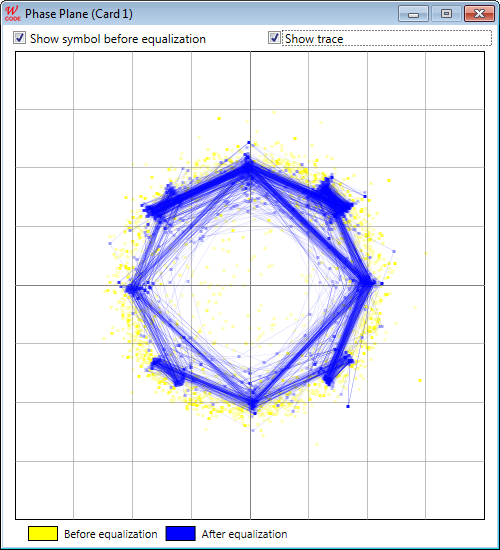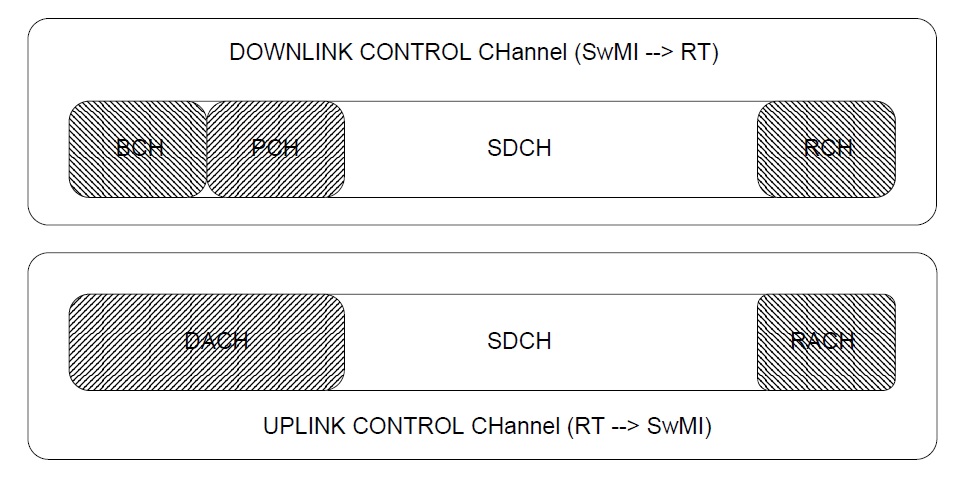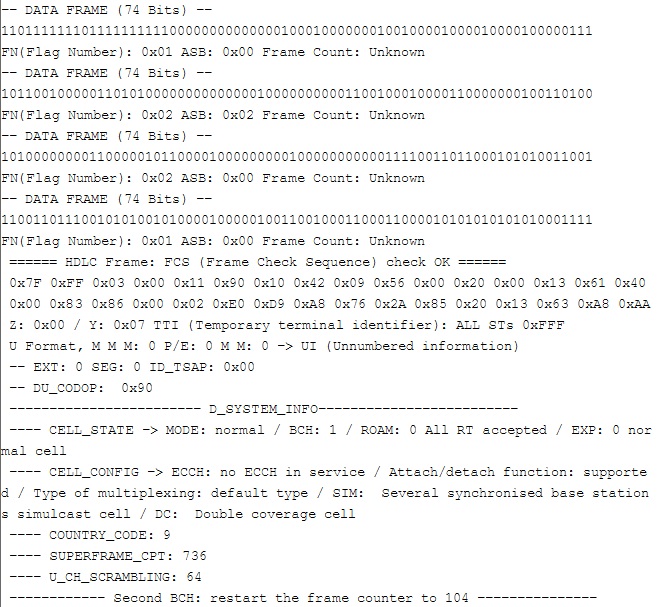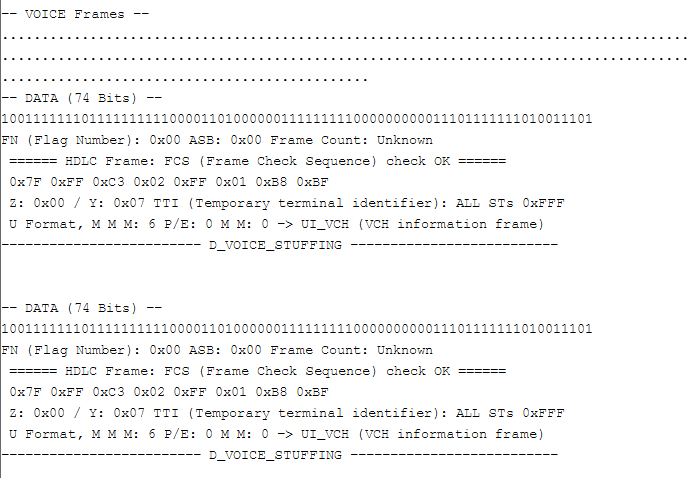
TETRAPOL is a digital voice and data system for mobile services and used for public safety and civilian PMR (Public Mobile Radio). It is defined by the TETRAPOL Forum in a Publicly Available Standard (PAS). It features end-to-end encryption.
|
Parameter |
Value |
|
Frequency range |
VHF and UHF: 70 – 520 MHz |
|
Operation modes |
Digital voice and data system |
|
Symbol rate |
8 kBd |
|
Modulation |
GMSK (BT=0.25) |
|
Receiver settings |
BW = 12.5 kHz |
|
Input format(s) |
IF |
|
Additional info |
Data or voice |
|
Operation modes |
Trunked or Direct-Mode |
|
Access method |
FDMA |
|
Voice codec |
RP-CELP (6000 bps) |
The WAVECOM decoder can detect Data, Voice, Random Access (RACH), Training, High Rate Data, Direct Mode Emergency Frame and SCH/TI frames with binary outputs. Each frame can be displayed in binary format with associated confidence(s) as well as a verification of the CRC for the given frame. Both VHF and UHF version of the PAS is supported. Currently, it supports the protocol interpretation for Data and RACH frames. The voice frames are finally processed by the TETRAPOL vocoder and output to the speaker for live monitoring purpose. Each voice session is saved in a wav file and the voice frame bits are saved in a txt file.
To use the mode set Offset to the center of the received signal. Select the correct polarity with respect to received signal. The TETRAPOL PAS defines two signal types: Downlink and Uplink. Downlink is transmitted as INV whilst uplink is transmitted as NOR. However some receivers invert the signal at the IF output.
This decoder uses soft-decision for demodulation and decoding to combat various disturbance in the received signal. The phase plane (Options -> Show Phase Plane) display visualizes the GMSK symbol before and after the demodulation.

TETRAPOL Phase Plane.
The “Confidence” (max. value 100) shows the overall decoding quality. The user can use the “Message Type” in the “Options” menu to display “Data & Voice Frames”, “Data Frames Only” or “Voice Frames Only”.
A TETRAPOL terminals can operate in three different modes: Network Mode, Repeat Mode and Direct Mode. In the Network Mode, a Base Station (BS) transmits one Control Channel (CCH) and several Traffic Channels (TCH), which can be in total up to 24 radio channels. Frames are organised in Superframes, with a 4 second period (or 200 frames), which is synchronized by special frames in CCH, e.g., Paging Channel (PCH) and Broadcast Channel (BCH) frames. Repeat Mode is a special form of Network Mode, with only TCH frames and Direct Mode is operated between two terminals in half duplex mode.
The Control Channel (CCH) as shown in Fig. 1 contains BCH (Broadcast CHannel), SDCH (Signalling and Data CHannel), DACH (Dynamic random Access CHannel), PCH (Paging CHannel), RCH (Random access answer CHannel) and RACH (Random Access CHannel). The other type is Traffic Channel (TCH), which can be specific as Voice Channel (Fig. 2) and Data Channel. It contains SCH (Signalling CHannel), SCH/TI (Signalling CHannel/Transmitter Interruption), and Voice/Data Channel.

Fig. 1 Control Channel Mode

Fig. 2 Traffic Channel Mode: Voice Channel
All these channel frames can be coded in 5 different types in Network Mode: Voice, Data, Random Access Frames, Training Frame, SCH/TI Frames. Additionally, Direct Mode Emergency Frame can also appear in Direct Mode.
Each frame is 120 bits, which is obtained by several steps: discriminator with CRC, channel encoding, interleaving, scrambling with formatting, differential with encoding, and modulation. The precise structures of these are described in the TETRAPOL Specifications Radio Air Interface.
The frames can be interpreted according to the protocol. Examples of decoded frames are shown below.
Data Frame
Each data frame is 74 bits. They can be combined according to the FN bits to form HDLC frame displayed in Hex, with the FCS check in the last two bytes. The first 2 bytes in the HDLC frames contain the address information as shown in the first line. The second line is the ‘command field’, which indicates the types of the frame. The ‘command field’ can be: Information (I), Supervision (S), DACH (A) and Unnumbered (U) format (as shown in this example). The following bytes are the information field. The lines beginning with ‘--’ are the header information of the user data, including: type, presence or not of user data to be carried, segmentation or not. The following lines beginning with ‘----’ are contents in each bytes for the application layer.

RACH Frame
The RACH Frame contains 23 bits, where the last 9 bits are the CRC. The first 3 bits indicates Y address, while the 11 bits are the most significant bits of X address (X12 to X1). The SwMI shall find the missing bit (X0).

Voice Frame
Each voice frame contains 126 bits. They are processed by the TETRAPOL vocoder, unencrypted clear voice is finally output to the speaker for live monitoring. At the same time each voice session is saved in a wav file and the plain bits are saved in a txt file. In case of the encryption, the voice to the speaker is not audiable, but the plain bits saved in the txt file can be used for further decryption analysis.

A time stamp is displayed to each frame at the time of decoding. Since the decoder works in real-time, the time of decoding is also the time of signal receiving (with a neglectale delay). The time stamp has a resolution of 1 millisecond (ms). The time stamp display delivers a method to verify whether each received frame is decoded in real-time. In a continous state we can count 50 frames each second. This matches to the 20 ms frame length. The display of this time stamp can be switched off (Options -> Real Timestamp) for a readable data-output.